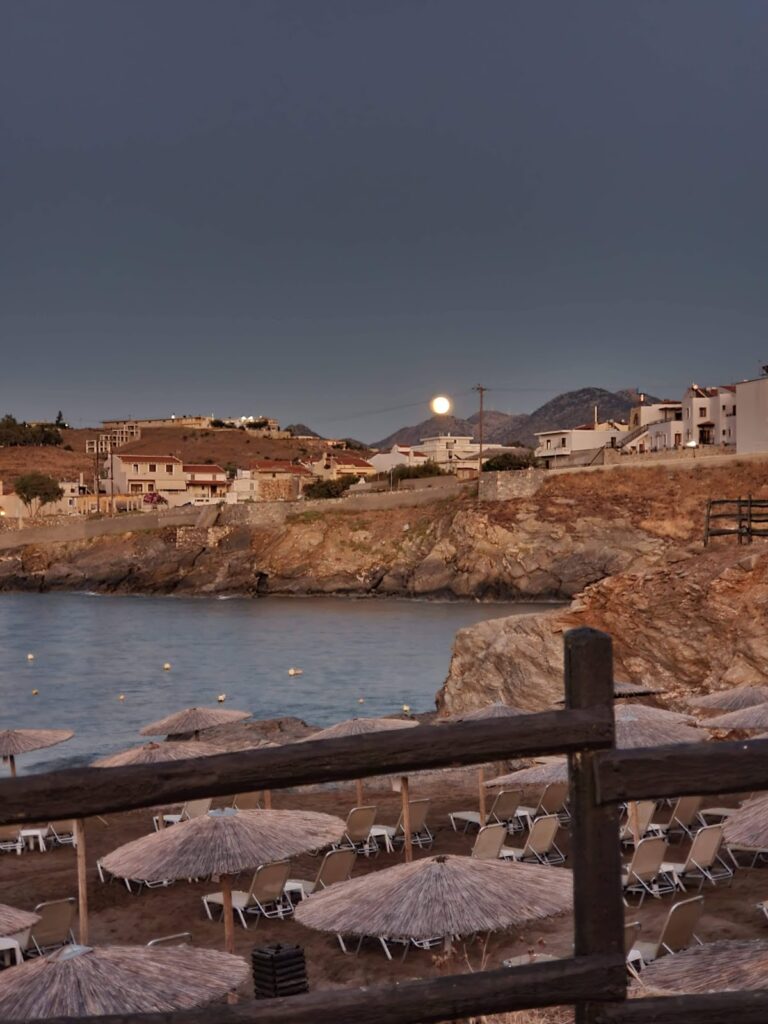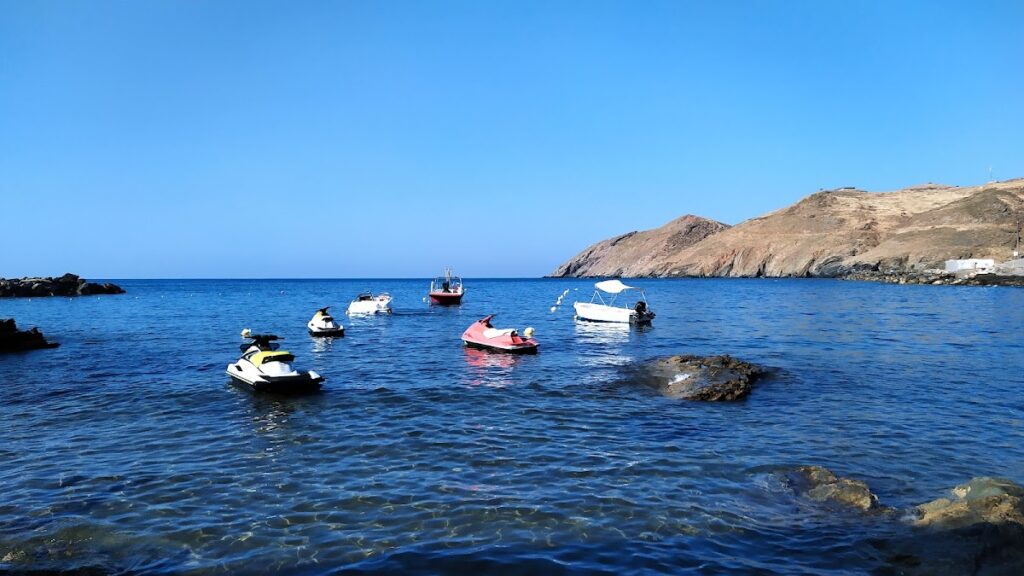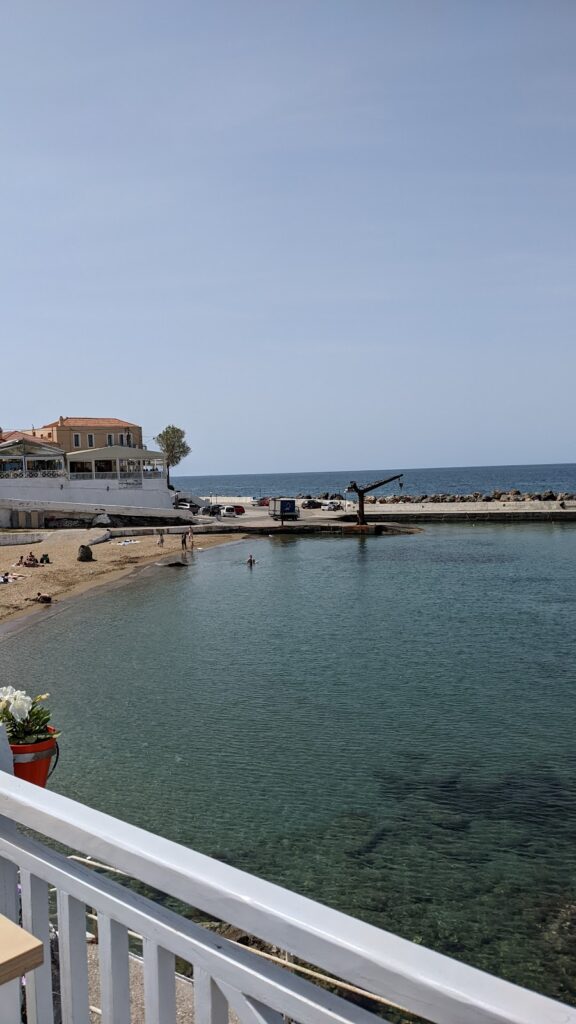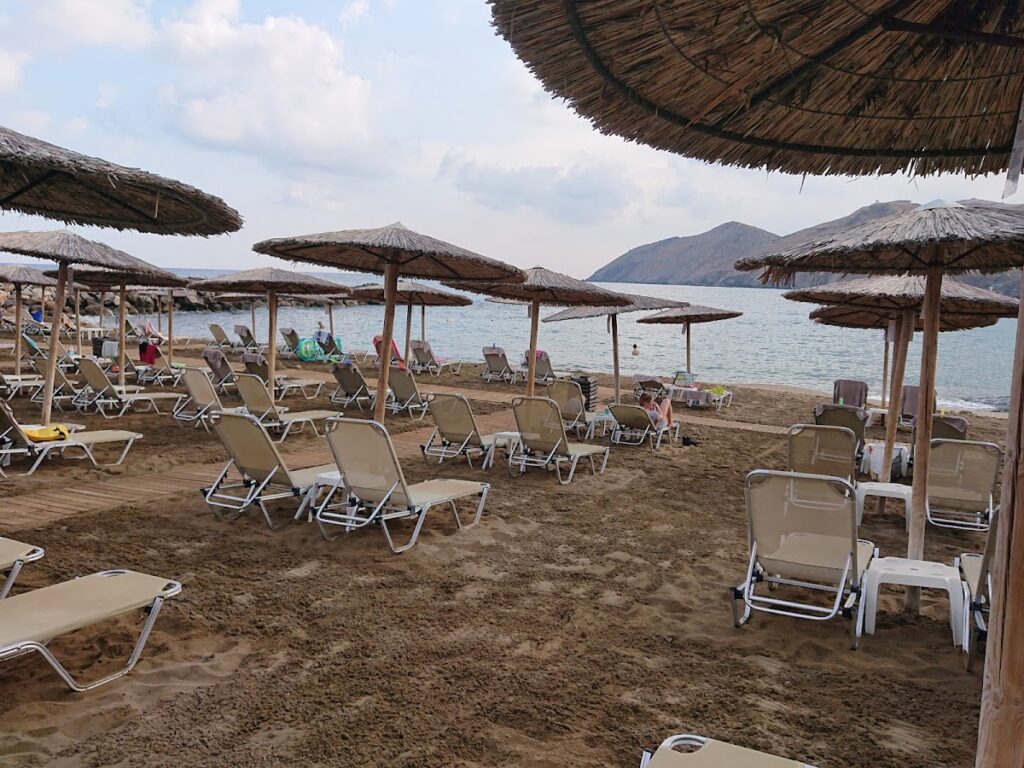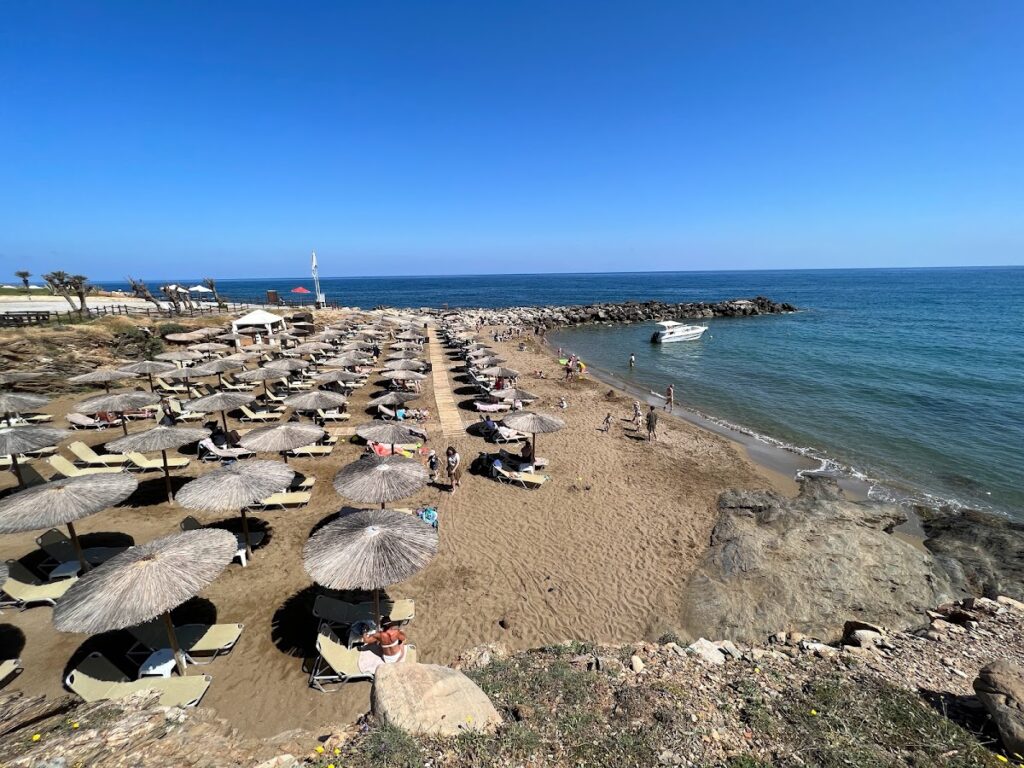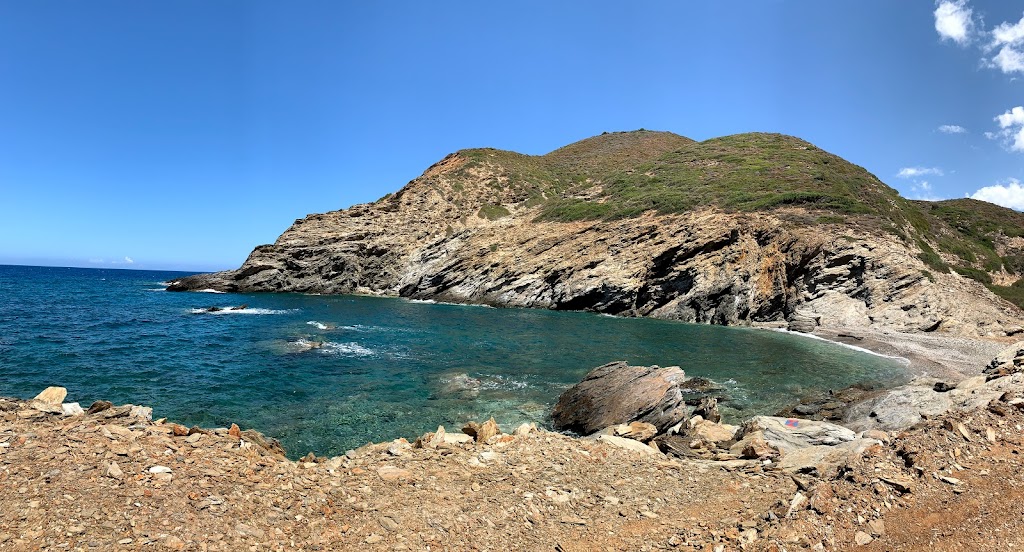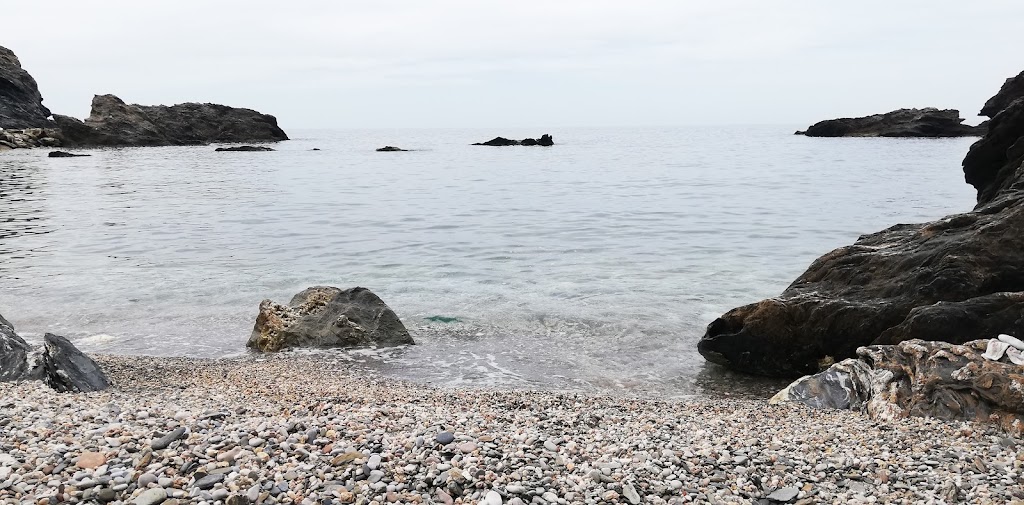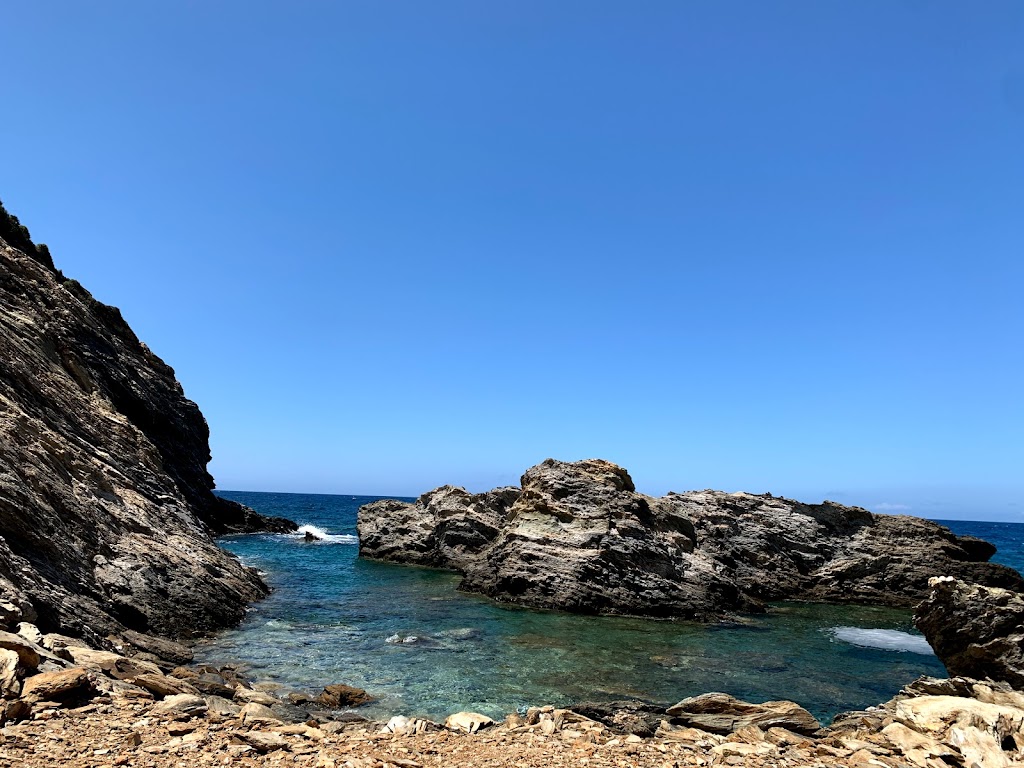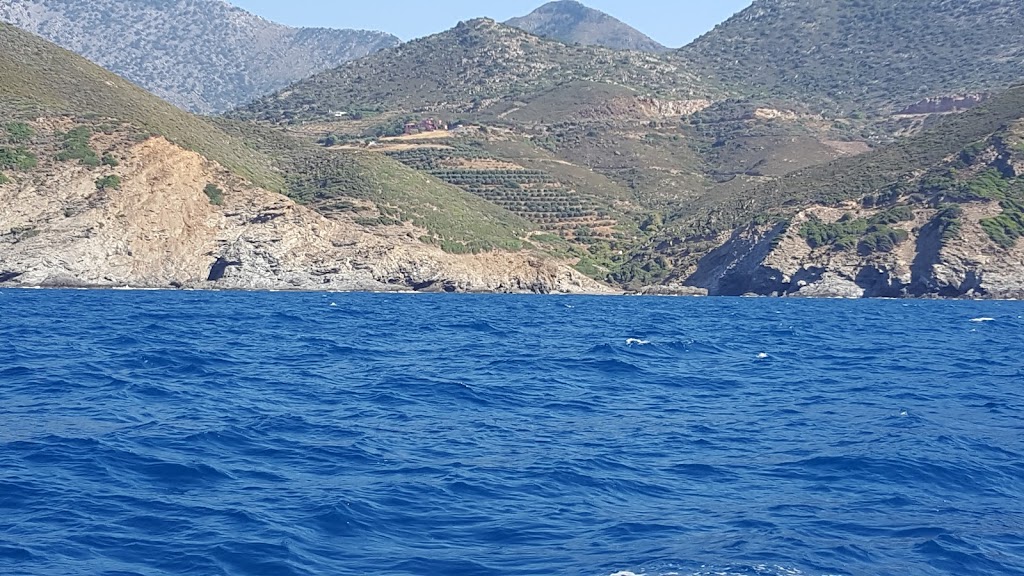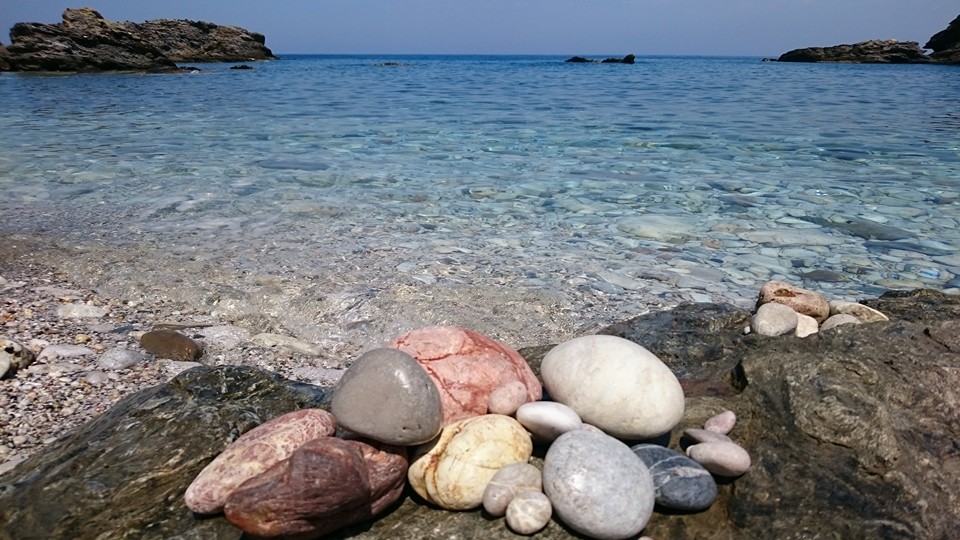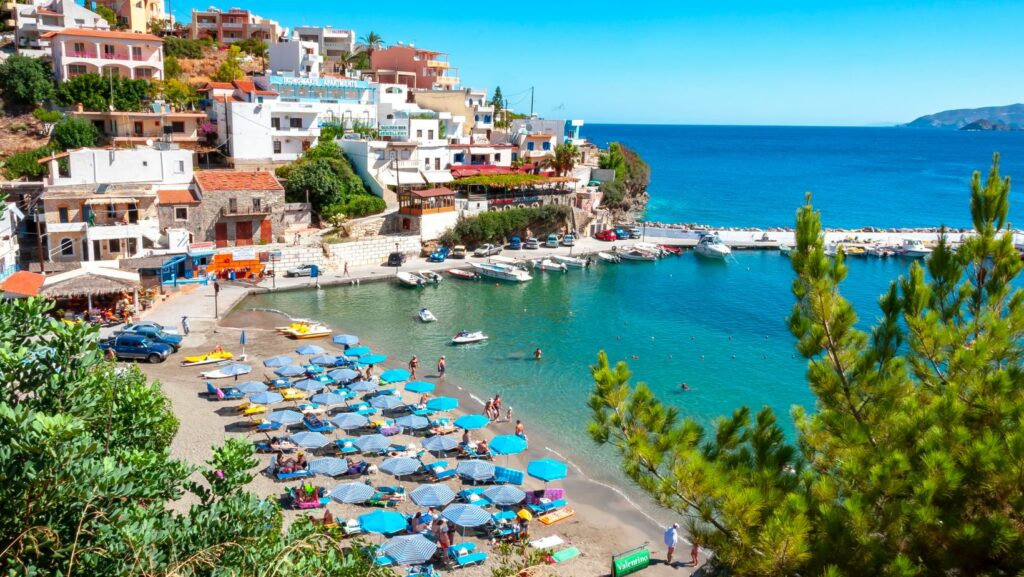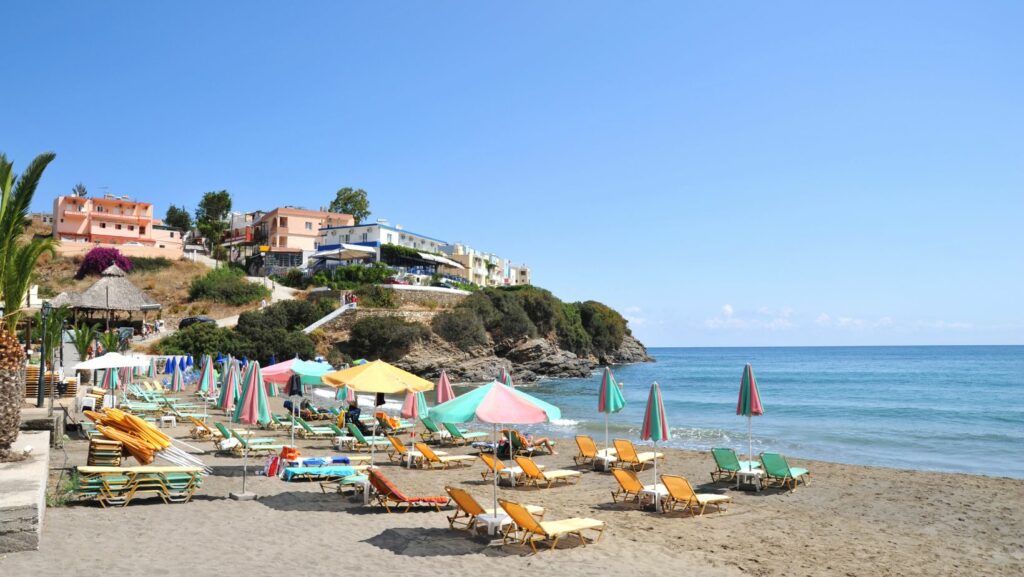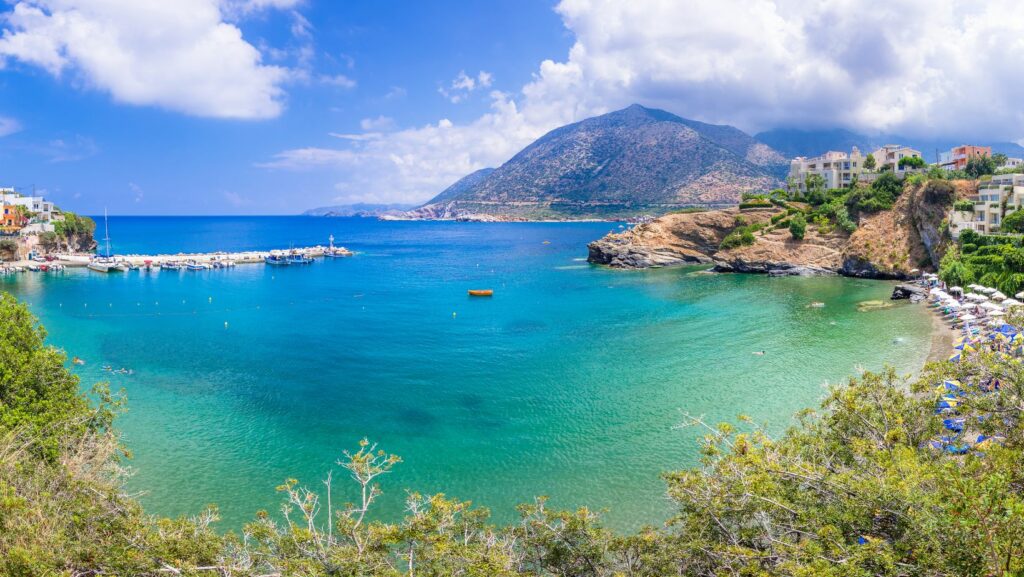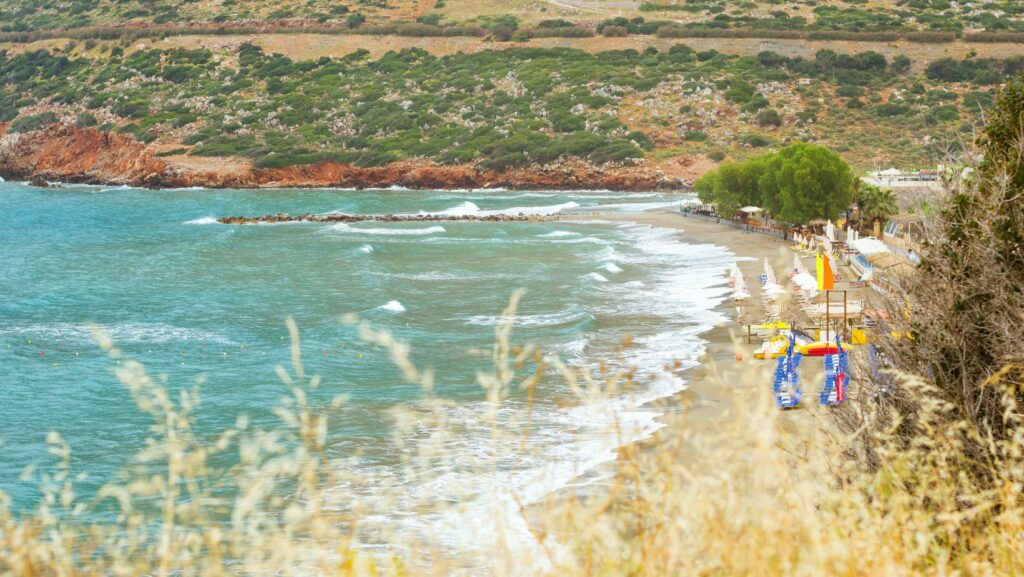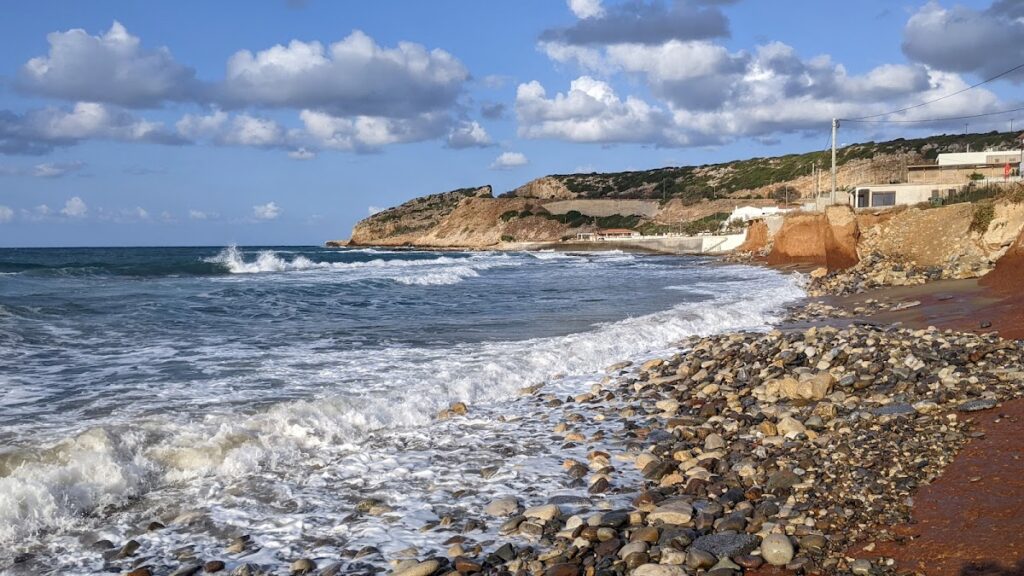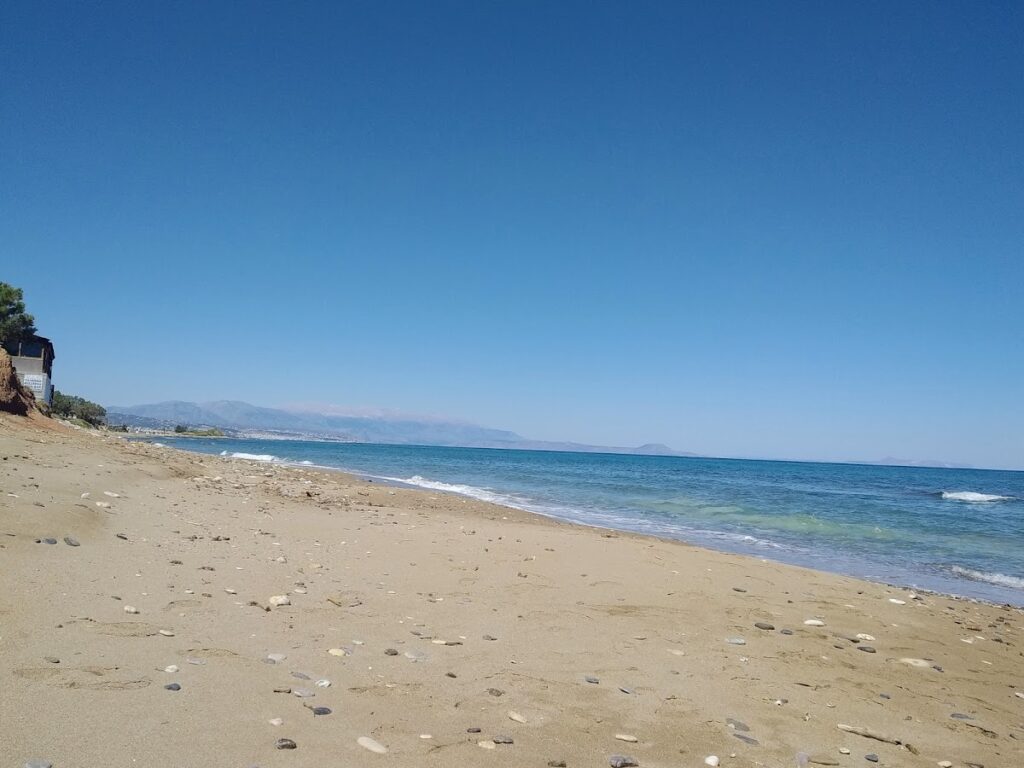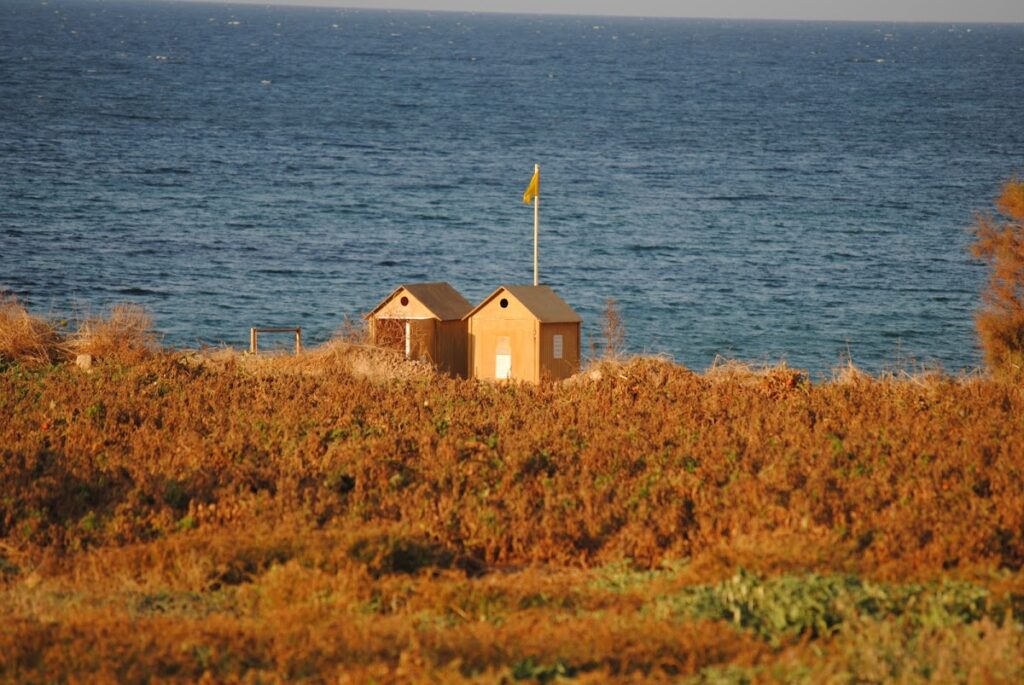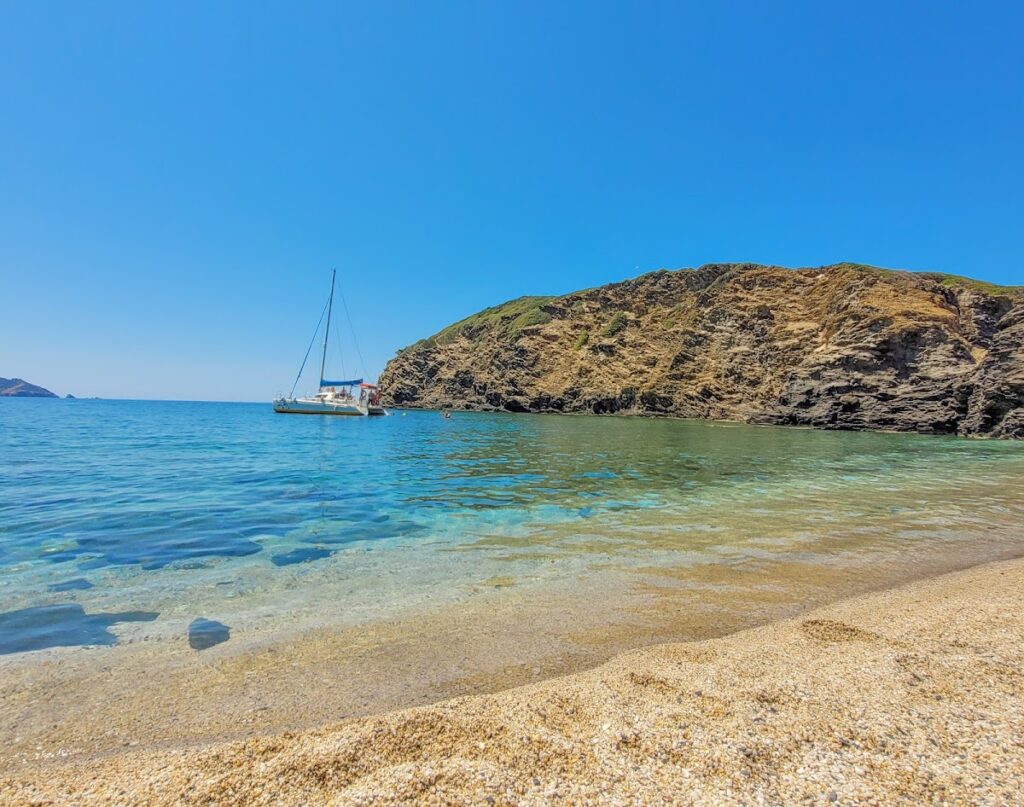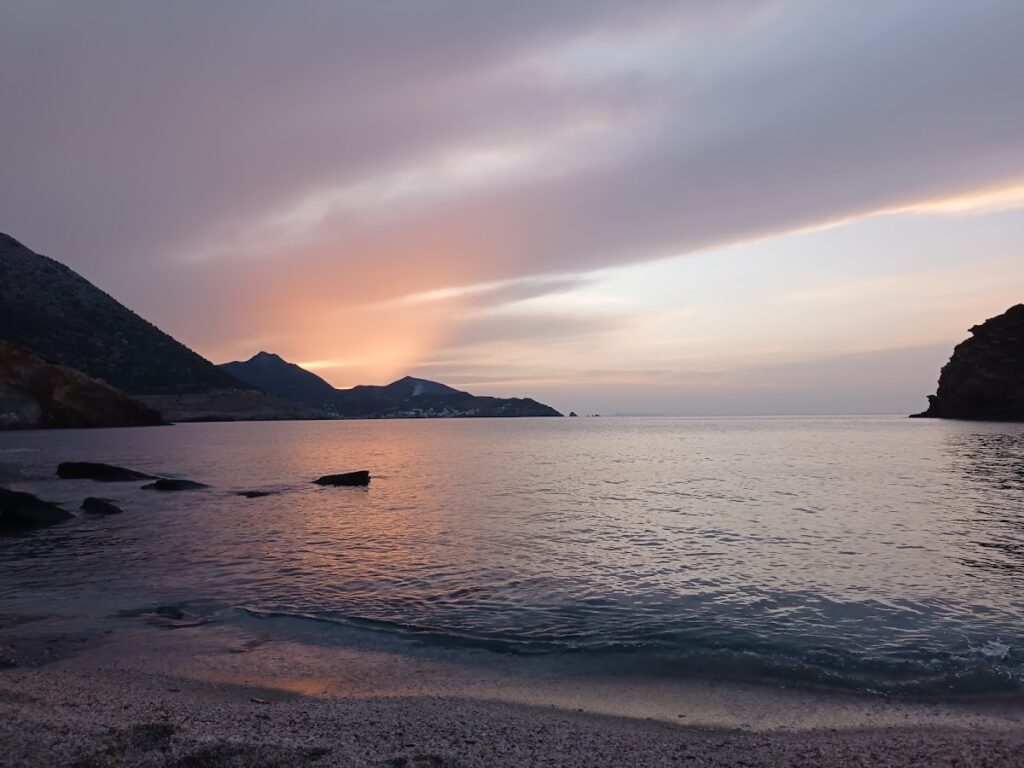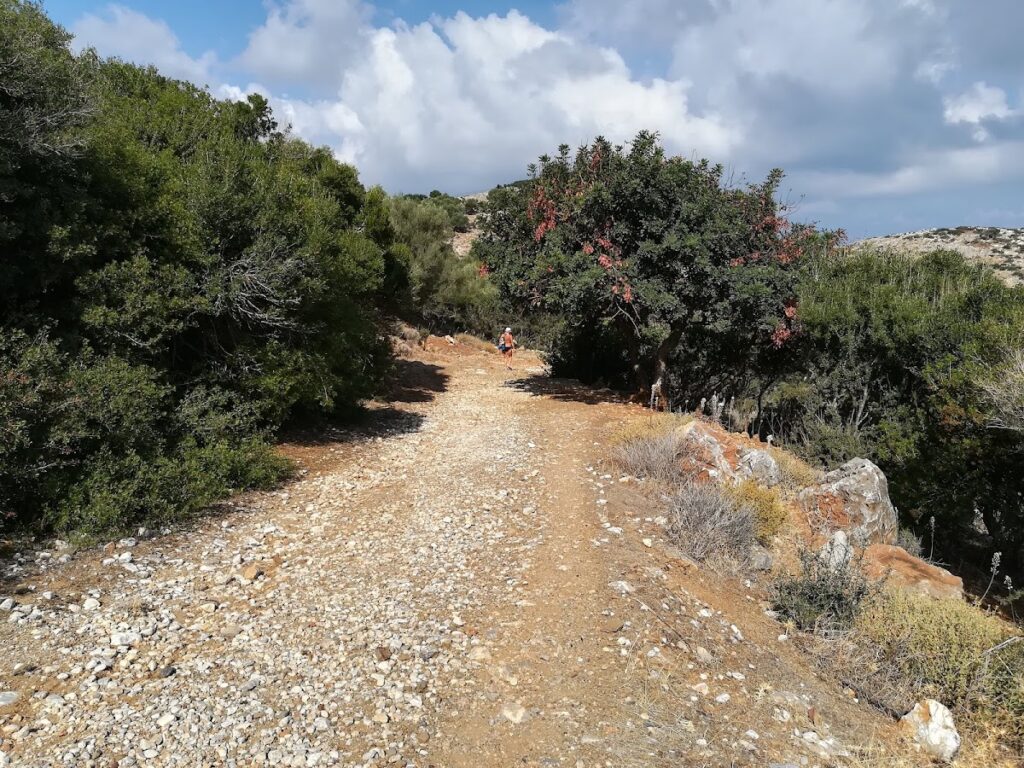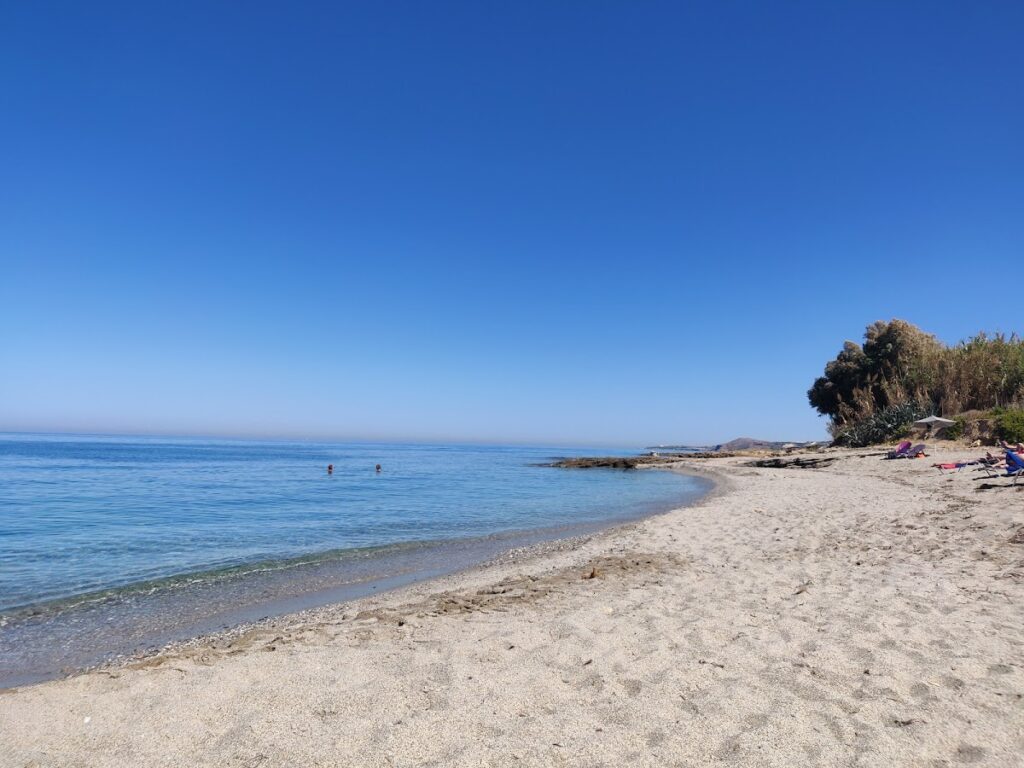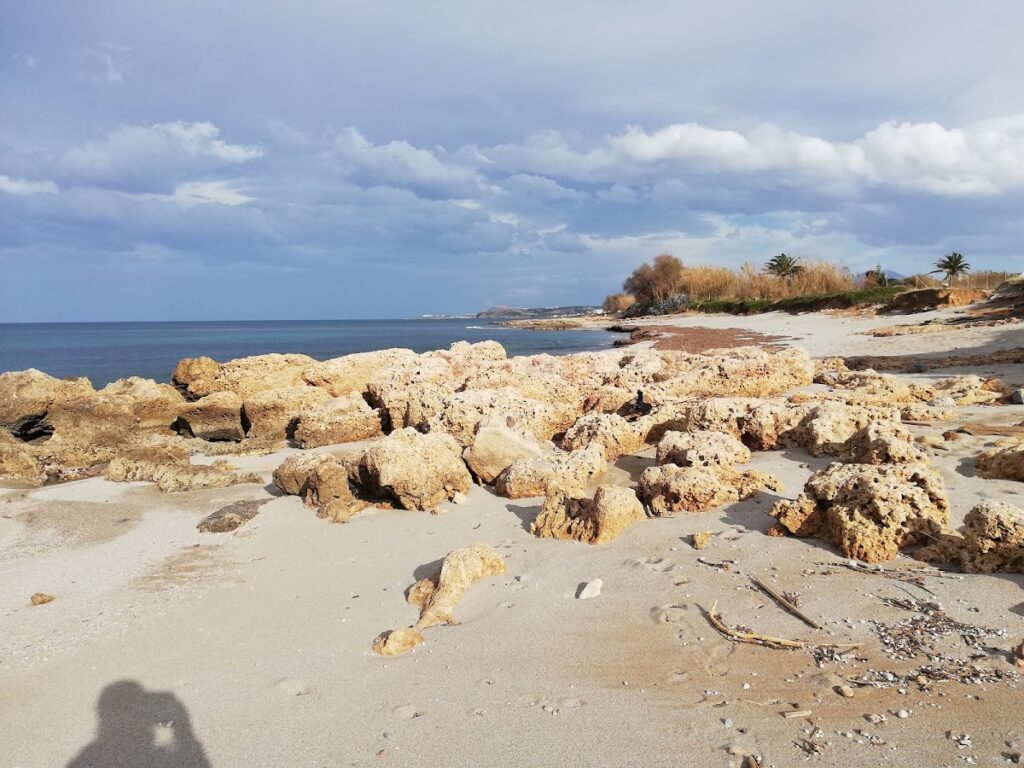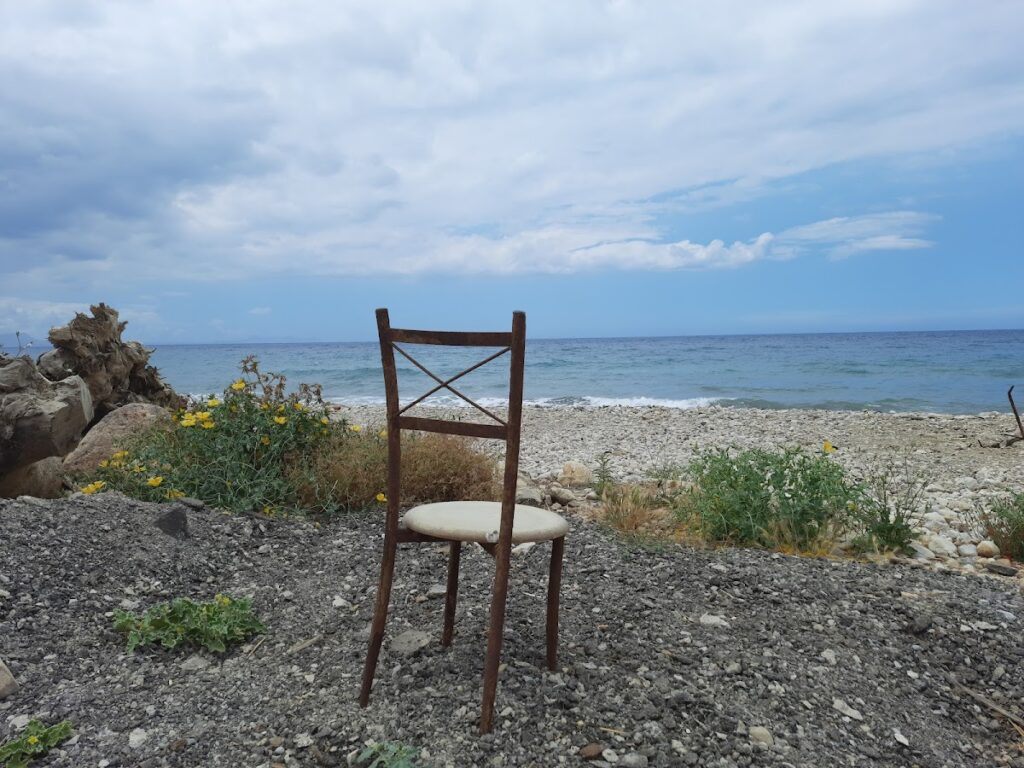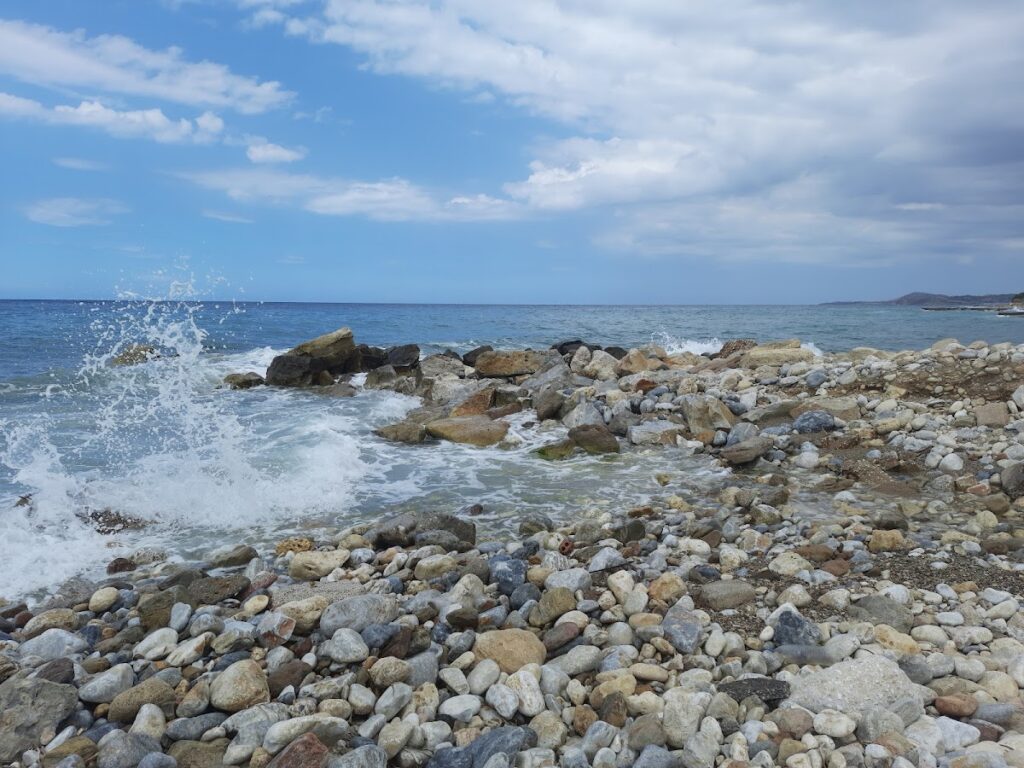Beaches near Roumelí, in Rethymno region
Here is list of closest beaches to Roumelí
- 1.9 km
- Panormo beaches
- Sand
- Shallow
- Blue
Panormo, located approximately 20km east of the city of Rethymnon in the Milopotamos province, is a peaceful coastal village. It has experienced rapid growth in recent years while preserving its traditional charm. Its attractiveness lies in the untouched beauty of the Cretan countryside, the charming village, stunning beaches, and convenient accessibility.
Panormo boasts two primary beaches and several smaller ones. The village’s Greek name, which translates to ‘a location with a natural port’, aptly describes Panormos as it is a natural harbour with tranquil waters. The beach at the harbour, known as Limanaki, serves as the region’s port. It’s sandy, with clear waters, making it perfect for families with young children due to its shallow waters and the protection from waves provided by a cement pier. The beach is well-equipped with umbrellas, showers, water sports facilities, and plenty of accommodation and dining options nearby. Adjacent to Limanaki is a smaller, less populated sandy beach.
The second main beach, Limni, is situated just 200m west of the village. Similar to Limanaki, it is sandy and shielded by a rocky pier, essentially dividing it into two separate beaches. Further east, a small, secluded cove with a pebbly beach is perfect for undisturbed relaxation and snorkelling during calm seas. Panormo can be reached via direct bus services from Rethymnon or suburban bus services between Heraklion and Rethymnon. Excursion boats also operate from the local harbour.
A short history of the area
Panormo is historically significant and is thought to be located on the site of the ancient city of Panormus. The discovery of the impressive basilica of St. Sophia, dating back to the 6th century AD, confirms the presence of an ancient city. The basilica, situated 500m southwest of the village, is considered one of the largest Christian churches in Greece and the biggest in West Crete. The village is also known as Kastelli of Milopotamos, named after the fort built by the Genoese conquerors in 1206, which was later captured by the Venetians. Remnants of this fort can still be seen near the harbour.
In more recent history, Panormo served as a hub for transporting goods produced in the surrounding region, particularly olives and carobs. A renovated old carob mill, now used as a cultural centre, can still be visited. The village was bombed during the German Occupation. The construction of a new national road in the 1970s, adjacent to the village, and the building of a marina in 1980 has contributed to Panormo’s tourism growth. The village celebrates three festivals every year: Ascension, St. John on June 24, and St. Nicholas on December 6.

- 2.6 km
- Koukistres beach
- Pebbles
- Deep
- Deep blue
The Skepasti beaches, situated roughly 27km to the east of Rethymnon and a mere 2km eastward from the namesake village Skepasti in the Milopotamos province, are predominantly reachable via poor dirt roads that originate from the village. Among these beaches, the local population’s favourite is Koukistres. The Skepasti beaches, which are exposed to the northern winds, are characterized by their pebbly texture and deep waters. They are entirely unorganized and quite a distance from the closest hotels and eateries, which are located in Panormos. Thus, it’s essential to bring all necessities if you plan to visit. The surrounding terrain, marked by rugged Cretan landscapes and barren, rocky grounds, adds to the remote charm.
While here, it’s recommended to combine beach activities with a trip to the quaint, traditional village of Skepasti. The village derives its name from the Byzantine church of Panagia Skepasti, which has a fascinating legend associated with it that’s worth exploring.
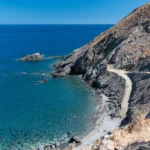
- 5.1 km
- Geropotamos beach
- Pebbles
- Deep
- Blue
Geropotamos, situated approximately 18km east of Rethymnon and 3km west of Panormo, is named after the eponymous river that empties into the eastern end of the beach. The beach, though small, is marked by its sandy terrain and crystal-clear, cool water, a result of the river that runs throughout the year, forming a small lake near the shore. The beach is minimally organized with umbrellas and a canteen that provides refreshments, coffee, water, and some basic food supplies. A luxurious hotel is also located adjacent to the river. Although easily accessible, the beach remains quiet and uncrowded. However, the orientation of the shore makes it susceptible to northern winds.
Geropotamos’ location on the main road connecting Heraklion and Rethymno makes it easily accessible. You can even reach it by bus by asking the driver to stop at Geropotamos. The area’s importance is underscored by its status as a natural shelter for rare birds and animals, courtesy of the Waterland. West of Geropotamos, the shore is riddled with cavities, home to the rare monk seals (Monachus monachus) and falcons.
A few meters west of Geropotamos beach, you’ll find an extraordinary rocky arch known as Kamara. Beneath Kamara, there lies a small beach with sand, small pebbles, and crystal blue waters. The beach’s size makes it vulnerable to north winds, with waves almost covering it. However, on calm sea days, it is truly beautiful. The beach, surrounded by vertical cliffs that provide natural shade, is only accessible by boat. A fun activity on windless days is to swim from Geropotamos and snorkel en route.
Cape Lianos, the eastern end of Geropotamos beach, also known as the Lavris area, is a rocky cape with a luxury hotel built on it. In front of the hotel, there are some small artificial coves with piers protecting them from waves. Although they appear private, you can reach the coves via a footpath that begins near the Geropotamos beach and heads eastwards, even if you’re not a hotel guest.
The Lianos Cape area, along with the Geropotamos wetland, is protected under the European program “Natura 2000”. It is home to a variety of reptiles, birds, turtles, amphibians, mammals, and plants, some of which are indigenous or endangered.
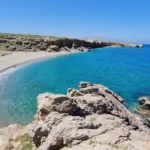
- 5.7 km
- Spilies beach
- Pebbles
- Deep
- Blue
Spilies, also known as “Tou Maliou to Riaki” or Maliou stream, is a hidden gem located 15km to the east of Rethymnon city. Nestled between Skaleta and Geropotamos, the area is serene and tranquil, despite its proximity to the main highway that links Heraklion and Rethymno.
This hidden paradise is nestled in a small rocky bay, boasting of a pebbly beach with crystal clear and deep waters, shielded by towering cliffs. The defining feature of the cove is the stunning cavernous rocks that shelter the small beach from the west. Beyond the western and eastern ends of the beach, several sea caves and rock formations with extraordinary shapes adorn the landscape. Unfortunately, a portion of the eastern caves collapsed in the winter of 2011-12. These caves serve as crucial habitats for endangered species like the Mediterranean monk seal.
For an adventurous day, explore the rocky shores east of the beach, leading to the remarkable natural rocky arch of Geropotamos.
The beach provides basic amenities such as umbrellas, beds, and a small canteen. However, be wary of waves, which are a common occurrence due to the northern winds.
To reach the beach from Rethymnon, take the main road to Heraklion. After passing Skaleta, you’ll spot “Creta Farm”, followed by two gas stations on either side of the road. A short path to the beach begins behind the gas station on your left, marked by a sign to Spilies (ΣΠΗΛΙΕΣ). To avoid a left turn on the national road, it’s recommended to enter the station on your right and then turn back towards Rethymno.
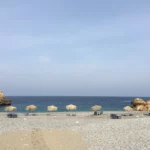
- 6.2 km
- Agios Nikolaos beach at Bali
- Pebbles
- Deep
- Deep blue
The beach of Agios Nikolaos, situated slightly west of Bali in the province of Mylopotamos, is nestled in a secluded area. The beach’s name is derived from the Byzantine two-nave church of Saint Nicholas, which is positioned within a lush green creek leading to a stunning cove. Despite the ravine drying out towards the end of spring, the presence of numerous plane trees indicates the existence of water.
The cove is encased by striking limestone rocks that create small caves, adding to the charm of Agios Nikolaos. The beach, however, has a rocky seabed and is almost semicircular in shape. Unfortunately, it is often littered with trash brought in by the north winds.
Access to Agios Nikolaos beach is via two poorly maintained dirt roads that start near the motorway, beyond Bali. One of these routes, which first ascends to the antennas at Bombadopirgos peak before descending to the beach, is closed off. The other route approaches the beach from the east, but due to its poor condition, a walk of roughly 10 minutes is required.
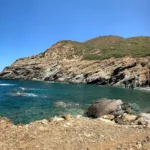
- 7.6 km
- Bali beaches
- Sand
- Shallow
- Green
The coastal resort of Bali is situated in a vast bay, 30km east of Rethymno and 43km west of Heraklion. The National Road that connects Heraklion and Rethymno passes alongside the village, making Bali easily reachable from all parts of the island. It’s a perfect spot for family getaways and romantic vacations. Bali boasts four beaches nestled in sandy coves with appealing greenish waters. The beaches, shielded by the bay facing west, are typically tranquil and suitable for children, with good organization. The coolness of the water is attributed to the numerous springs around that channel fresh water into the sea from the Psiloritis Range.
Livadi Beach
As you enter the village, the first beach you encounter is Livadi, the longest in the area. It’s located in an open bay, which is more exposed to winds than the other three. Despite being well-organized and frequently bustling, it’s less picturesque than the others. Its name, Livadi (meaning meadows), is due to the nearby valley. At the eastern end of Livadi, you’ll find two separate smaller beaches, Kouskouras.
Varkotopos Beach
Moving ahead, at the village center, you’ll find the secluded bay of Varkotopos featuring a beautiful beach with sand and gravel, which is well-organized and popular. It’s perfect for young children due to the shallow waters and proximity to all necessary amenities.
Limani (Harbor) Beach
Further north, you’ll come across the scenic port of Bali, adjacent to a clean beach. Known as Limani in Greek, it’s well-organized and surrounded by numerous restaurants and shops.
Karavostasis Beach
Karavostasis, the last beach you’ll encounter, is the most beautiful in the area. It’s smaller than the other bays, which often makes it appear crowded. Although it’s well-organized, it’s less so than the others.
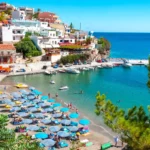
- 9.4 km
- Skaleta beaches
- Rocks in places, Sand
- Shallow
- Blue
Commencing 11km east of Rethymno and extending 3km eastward is the Skaleta beachfront, marking the end of the expansive beach of the Bay of Rethymno. The first resort you encounter after Pighianos Kampos is Sfakaki, which is exceptionally well arranged.
Stavromenos beach is the next stop, just 1km away, named after the area’s synonymous settlement. The beaches here are predominantly sandy and meticulously organized, with spots featuring pebbles and tiny rocks. As you journey eastward, the sandy stretch narrows down and gradually fades until it vanishes at the end of the Rethymno Gulf.
Continuing another 1km, you will reach the final segment of the immense East Rethymnon beachfront, Skaleta. Like all beaches on the north coast, Skaleta beachfront is exposed to the winds and typically experiences waves. The surrounding area has seen considerable development in recent years, now abounding with large hotels and tourist facilities. Regular bus services are available from Rethymno to Sfakaki, Stavromenos, and Skaleta.
From May to September, summer nights bring an extraordinary sight as loggerhead sea turtles lay their eggs in the Gulf’s sand. It’s not uncommon to see small areas of the beach cordoned off and inaccessible to visitors where nests have been spotted.
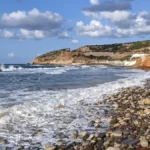
- 11.6 km
- Glaros beaches
- Pebbles, Sand
- Normal
- Green
Charakas is a region situated approximately 36km to the east of Rethymno and 44km to the west of Heraklion, near Bali. Just half a kilometer east of the Panagia Charakiani Church, a small peninsula forms where the petite beaches of Glaros and Katevati can be found. The major highway that links Heraklion and Rethymno is conveniently close by.
Katevati Beach
Located on the western edge of this peninsula is the small but charming Katevati beach, known for its large pebbles. It boasts spectacular views of the rugged Talean Mountains to the south. Its rocky underbelly makes it an ideal spot for fishing and snorkeling. However, it is unregulated, so visitors are advised to come equipped with necessities such as an umbrella, food, and water. Furthermore, it is shielded from the prevalent northern winds due to its eastern positioning. To the north of the beach, on a hill, there are ruins from an ancient settlement.
Glaros Beach
A short distance to the north of the first beach, accessible via a trail starting north of the highway, are the three beautiful beaches of Glaros (also referred to as Glaria or Peristeri) which face west. The beach gets its name from the small, greenish islet of Glaros that’s separated from the shore by a very narrow canal (less than 2m in width). While the shore is sandy, the seabed is rocky, making it an ideal spot for solitude seekers and snorkeling enthusiasts. The northernmost beach, which can be reached by crossing a hill with a Minoan settlement, is considered the most beautiful.
Charakiani Beach
Situated below the Panagia Charakiani Church is a beach with large, round pebbles that attract snorkelers and spearfishermen. This beach can be easily accessed by following a trail that starts from the church. It is easily identifiable by a small islet located directly opposite the beach.
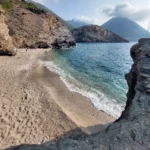
- 12.7 km
- Pigianos Kambos beaches
- Rocks in places, Sand
- Shallow
- Blue
Pigianos Kambos, also known as Pigi beach, is situated 8km to the east of Rethymno, centrally positioned along Rethymno Bay’s extensive beach. The name, Pigianos Kambos, translates to “Plane of Pigi” from Greek, reflecting the fertile fields that belong to the inhabitants of the nearby Pigi village. Today, Pigianos Kambos serves as a coastal tourist destination, albeit less developed than its neighbor, Adelianos Kambos. The area boasts a variety of accommodations, from apartments and rooms to larger hotels, complemented by multiple dining, entertainment, and shopping options.
The beach in Pigianos Kambos offers a peaceful and quieter atmosphere compared to the other beaches in Rethymnon. Between Pigianos Kambos and Stavromenos, visitors can enjoy swimming and snorkelling in the numerous small, rocky coves. A unique feature of Pigianos Kambos is the opportunity to spot protected sea turtle nests, as these creatures choose this sandy beach to lay their eggs.
Regular bus services from the center of Rethymnon make Pigianos Kambos easily accessible.

- 12.7 km
- Propatoumenos beaches
- Pebbles, Rocks in places
- Normal
- Blue
Between the coast of Panagia Charakiani and Kefali hill, where archaeological remnants have been found, lies the region of Propatoumenos, just a short distance west of Holy 317 Fathers Church. Propatoumenos translates to “the area that can be walked”. This is because there used to be a walking trail to the ancient town of Astali, near Bali. Given that the surrounding Talean mountains are incredibly steep and difficult to traverse, this area was perfect for walking. This broader area is rich in unexcavated Minoan settlements, most of which have been left to the mercy of roaming goats. Within this region, we encounter three remote pebbly beaches with pristine waters, situated just a stone’s throw away from the highway. The seabed, teeming with rocks, conglomerate formations and natural arches, is an ideal spot for snorkelling. Across the beaches, the small islet of Prassonissi, home to seagulls, can be accessed by swimming.
Kefala Beach
Tucked away to the east of Panagia Charakiani, near Bali, is Kefala Beach. This hidden gem, with its crystal clear waters all year round, remains fairly unknown. Although generally inaccessible, the beach unveils a stunning coastline adorned with vibrant hues of red soil and green vegetation from shrubs and wild carob trees during calm weather. Kefala has a charming pebble beach with a rich seabed. Further east, the beaches of Kalo Horafi and Vrahi can be found. Kefala gets its name from the low peak, about 40 meters high, situated just above the sea that once housed an unknown Minoan settlement. The entire area above the beach is scattered with remnants of ancient walls and structures.
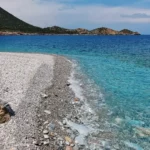
No results available
ResetBeaches in other nearby areas
No results available
Reset